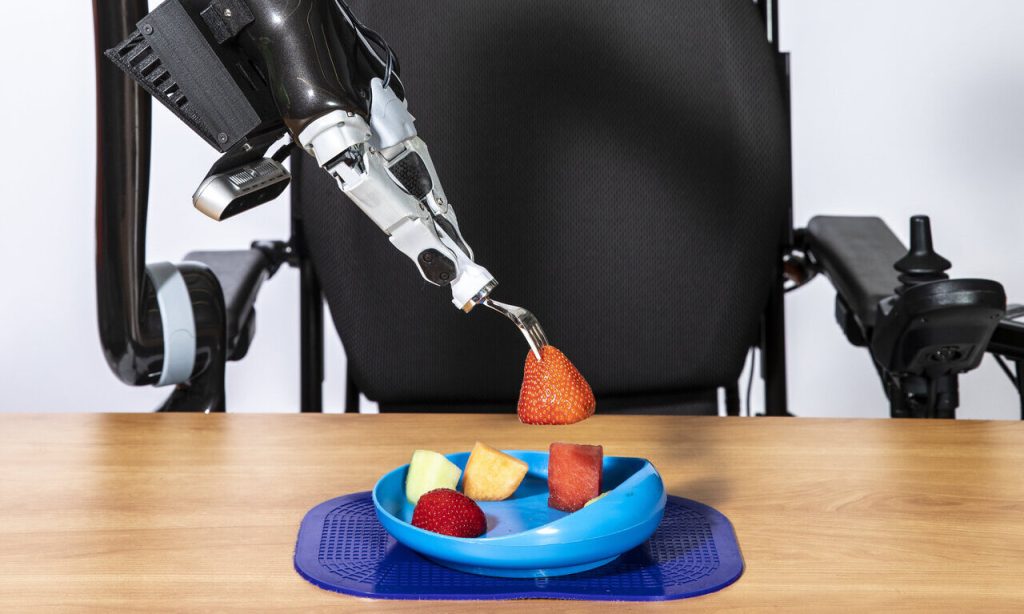Cornell researchers have unveiled a groundbreaking robotic feeding system designed to assist people with severe mobility limitations, such as spinal cord injuries, cerebral palsy, and multiple sclerosis. This innovative technology combines computer vision, machine learning, and multimodal sensing to safely feed individuals who cannot lean forward or independently ingest food.
Tapomayukh “Tapo” Bhattacharjee, assistant professor of computer science at Cornell’s Ann S. Bowers College of Computing and Information Science and the lead developer of the system, emphasized the unique challenges associated with feeding individuals with complex medical conditions.
The research, titled “Feel the Bite: Robot-Assisted Inside-Mouth Bite Transfer using Robust Mouth Perception and Physical Interaction-Aware Control,” was recently presented at the Human Robot Interaction conference, where it received a Best Paper Honorable Mention. Additionally, a demonstration of the broader robotic feeding system received a Best Demo Award.
Bhattacharjee’s EmPRISE Lab, renowned for its work in assistive robotics, has dedicated years to teaching machines the intricate process of feeding humans. The final stage of this process—transferring food from utensil to mouth—poses significant technical hurdles due to factors like limited mouth openings and unpredictable muscle spasms in users.
To address these challenges, the robotic system incorporates real-time mouth tracking and a dynamic response mechanism that can adapt to users’ movements and interactions. This allows the robot to differentiate between muscle spasms, intentional bites, and user attempts to manipulate the utensil inside their mouth.
The system underwent extensive user studies involving 13 individuals with diverse medical conditions across three locations: the EmPRISE Lab, a medical center in New York City, and a care recipient’s home in Connecticut. Feedback from users indicated that the robot was both safe and comfortable to use.
The robot features a multi-jointed arm equipped with a custom-built utensil that can sense applied forces. The mouth tracking method utilizes data from cameras positioned above and below the utensil to precisely detect mouth movements, overcoming visual obstructions caused by the utensil.

Rajat Kumar Jenamani, lead author of the paper and a doctoral student in computer science, highlighted the emotional impact of the robot on care recipients and their families. Witnessing a daughter with a rare birth defect successfully feed herself using the robotic system brought immense joy to her parents.
While further research is needed to evaluate the system’s long-term usability, the promising results underscore its potential to enhance the independence and quality of life for individuals with severe mobility limitations.
Bhattacharjee expressed great satisfaction with the project’s outcomes, emphasizing the profound impact of the technology on improving the daily lives of care recipients.
The research was primarily funded by the National Science Foundation, with contributions from co-authors including Daniel Stabile, Ziang Liu, Abrar Anwar (University of South California), and Katherine Dimitropoulou (Columbia University).
Source: Cornell Chronicle



